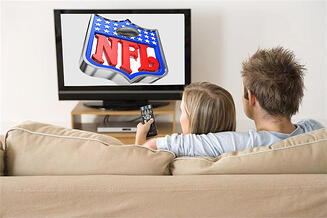 After a brutal winter, many of us in the Northeast are glad to finally begin our annual spring-cleaning, but we’ve noticed we aren’t the only ones looking for a fresh start. With confidence in the economy growing, there has been an uptick in established brands taking a fresh look at their brand strategy, an area they may have neglected during the recent tough economic times.For most, a brand refresh means creating a stronger platform for growth. To see evidence of this, one need look no further than recent TV commercials. Domino’s eliminated “Pizza” from their name, allowing for new items beyond their foundational menu offering. Meanwhile Buick promotes their redesigned cars through commercials with actors stating in disbelief, “That’s not a Buick.” Even Southwest has jumped on the bandwagon, highlighting that customers not only receive low fares and free checked bags, but some TLC when flying on one of their planes: “Without a heart, it’s just a machine.”
After a brutal winter, many of us in the Northeast are glad to finally begin our annual spring-cleaning, but we’ve noticed we aren’t the only ones looking for a fresh start. With confidence in the economy growing, there has been an uptick in established brands taking a fresh look at their brand strategy, an area they may have neglected during the recent tough economic times.For most, a brand refresh means creating a stronger platform for growth. To see evidence of this, one need look no further than recent TV commercials. Domino’s eliminated “Pizza” from their name, allowing for new items beyond their foundational menu offering. Meanwhile Buick promotes their redesigned cars through commercials with actors stating in disbelief, “That’s not a Buick.” Even Southwest has jumped on the bandwagon, highlighting that customers not only receive low fares and free checked bags, but some TLC when flying on one of their planes: “Without a heart, it’s just a machine.”
Some common triggers that appear to spur brands down a new path:
- The product and service offerings have fundamentally changed. That is not to say the brand has transformed at its most basic level, but needs to be updated to better reflect what the company is currently offering.
- The target audience has shifted. The brand may no longer be reaching its intended audience due to that audience aging, narrowing, broadening, or otherwise changing. Legacy brands may need to create a fresh image to become more relevant to younger audiences.
- The company is outgrowing its old brand. Recent company growth from geographic expansion, mergers and acquisitions, or internal structural changes may necessitate a shift in the brand or a split into sub-brands in order for it to stay true.
So with spring in the air and a little more life in the economy, now might be a good time to re-examine your core brands. A thorough market-based review may confirm your brand positioning remains strong and remind you of the core tenets that keep the brand motivating, distinctive, and believable. Or it could reveal opportunities for renewal and reinvention.

Lindsay Maroney is a consultant at South Street Strategy Group where they combine strategy and marketing science to uncover insights that help clients grow their business and strengthen their brands.



 Lindsay is an Associate Consultant at South Street Strategy Group.
Lindsay is an Associate Consultant at South Street Strategy Group.